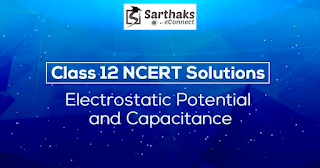NCERT Solutions Class 12 Physics Chapter 2 Electrostatic Potential and Capacitance
NCERT Solutions Class 12 Physics Chapter 2 Electrostatic Potential and Capacitance have answers to all of the students' questions to help them understand difficult concepts more easily. Our NCERT Solutions are the best study materials for preparing NCERT intext questions. Our NCERT Solutions Class 12 has thoroughly covered all topics.
· Electrostatic Capacitance - When a voltage is
applied to a two-terminal electrostatic capacitance device, it measures and
redistributes the electric charge.
· The electric potential is defined as the
amount of work performed during the translation of one unit charge from one
point to another.
· The potential due to a point charge is defined
as the amount of work done in moving one unit charge from infinity to that
specific point. In the presence of an electric field, any charge placed at
infinity will exert a force.
· Electric Dipole Potential - the electric
dipole at the equatorial point is zero. In nature, the charge of an electric
dipole has equal magnitude and opposite charges.
· Potential as a result of a Charge System - the
potential sum at any point is simply the algebraic sum of all the individual
charges in this specific system.
Equipotential
Surfaces - Equipotential surfaces are the surfaces of points with equal
charges.
· Potential Energy of a Charged System -
Potential energy is calculated as the charge from infinity to some specific
configuration when the external agent does all of the work without being
accelerated.
· Potential Energy in an External Field - the
energy stored in an object as a result of its shape, size, or stress.
· Conductor Electrostatics - The electrostatic
field in a conductor is zero. There are free electrons in the conductor.
Electrons drift along due to the force they experience in the presence of an
electric field.
NCERT Solutions Class 12
Physics has all the concepts discussed in detail and it is organized in the
pointwise method for clarity.



Comments
Post a Comment